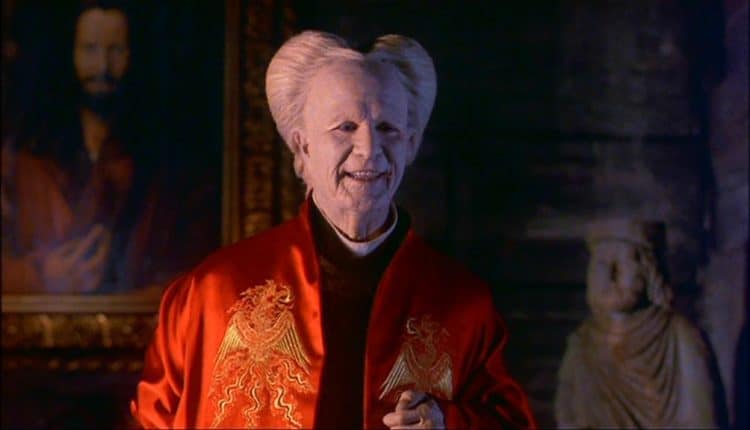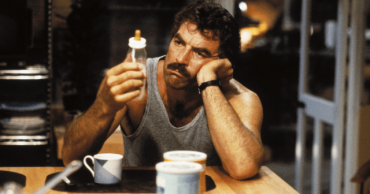
Vampires are nothing new in the world of entertainment. These types of films go back to the early 1920s with Nosferatu being considered the first-ever vampire movie. Since that time, vampires have evolved, most notably under Universal Studios’ string of Dracula films. No longer were these mysterious and horrific creatures hideous monsters that demanded to suck your blood. Now, they appeared more human-like, slyly creeping down hallways or schools drinking human blood whenever they see fit. As the culture of films continued to grow, for centuries Dracula remained a horrific monster and a staple for the genre until one film changed that notion: Twilight.
First a novel created by Stephenie Meyer, these adaptations made these once dangerous creatures into handsome and sparkly cardboards pretending to be human beings and it worked. Twilight became a massive cultural phenomenon and made the specialty genre hot once again. Despite the negative feedback from critics, the popularity only seemed to grow with each feature with the final film making close to a billion dollars worldwide. The most interesting thing about the Twilight effect is that it ignited a string of vampires in media such as True Blood and The Vampire Diaries and it had the entertainment industry in its grasp. However, these once dangerous creatures were horny vessels that romanticized the genre as vampires weren’t used for pure horror anymore. Of course, with all the trends, once Twilight was over, the medium for vampires started to die quickly. Since the death of vampires following the conclusion of the Bella Swan saga, vampires movies have come out here and there in the media, with the most notable being quirky and funny What We Do In The Shadows, but the genre hasn’t even come close to reaching the heights that it did during the time when Universal Studios released a flock of Dracula films in the 50s, 60s, and 70s. And it surely hasn’t even matched even a fraction of the popularity that Twilight brought to the genre. So, what happened? Why has the genre that created a staple of iconic figures in cinema died down immensely?
The easy answer could simply be due to the fact that it’s not the trend anymore. Superheroes are, but then this article would be pointless if the solution was that simple. There’s no exact reason why vampires don’t exist like they used to in media, but part of it is definitely due to quality. When you think of popular vampire franchise over the years, what comes to mind? Well, there’s also Underworld, The Mortal Instruments, Vampire Academy, Teen Wolf, and The Buffy The Vampire Slayer; Only a couple stick out as actually good sources of entertainment, whereas the others a forgettable affairs that shouldn’t have been made in the first place. The Twilight craze was bafflingly, but understandable. The vast majority of fans come from the novels, and Twilight wisely tapped into the younger demographic. It featured teenage drama involving hot dudes fighting over an ordinary chick. It was a special kink that somehow drove the fans wild and it’s the reason most novel adaptations copied the Twilight formula. The genre never really appealed to a wider demographic once the Twilight craze was over. In fact, the days of it being a true vampire horror film seemed to close when Twilight became the most successful vampire franchise of all time.
Heck, even the recent Morbius film may not even come close to amassing the lowest grossing Twilight movie, which still made a strong $407.1 million worldwide. Vampires are the perfect source for popcorn entertainment, but the issue is that it’s a tricky think to tackle. If a vampire film went full hardcore rated-R, then it’s not appealing to the sensibilities of young adults and is most likely not going to reach the scales that Twilight managed to achieve. This is why Morbius is PG-13 because Marvel wanted to target everyone when it comes to their demographic. However, if studios opt to make a PG-13 affair, then the chances these days are also slim. The vampire craze is long gone. Teenagers are no longer obsessing over a hot monster and that’s reflected in the dry spell that’s been casted in films since the popular franchise. Even Dracula Untold just couldn’t connect with the audiences much. It didn’t follow the Twilight path, nor was it a hardcore R-rated spectacle, but it didn’t separate itself from other vampire movies to gain much traction. In turn, going this route isn’t attracting fans who love vampire movies, but the more horror and grotesque aspect of the creatures. There’s certainly a market for these movies but being unable to truly nail an audience has likely hampered any hopes of vampires gaining any popularity soon.Twilight.
 Follow Us
Follow Us





